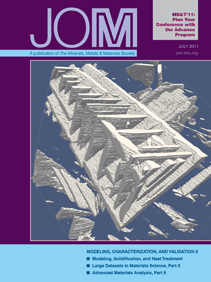 |
TMS ONLINE | TMS PUBLICATIONS | SITE MAP JOM Material Matters Articles in Full-Text Format: January 2006 |
Exploring traditional, innovative, and revolutionary issues in the minerals, metals, and materials fields. |
|||||
| OUR LATEST ISSUE | |||||
VISIT THE JOM COVER GALLERY
|
The Uniform Trade Secrets ActDavid V. RadackPennsylvania and 44 other states in the United States have adopted the Uniform Trade Secrets Act (UTSA). In those states in which the UTSA has been adopted, it replaces either old trade secret statutes or a long history of judge-made law, referred to as the “common law.” The UTSA has made uniform the definition of what a trade secret is as well as clarifying other aspects of the law, including how a trade secret is misappropriated and what remedies are available for violation of another’s trade secret. This uniformity is a good thing for businesses today that operate beyond their own state lines because of the certainty a stable body of law can bring to business relations with partners, customers, and competitors who may be located in different states. The major contributions to the law that the UTSA brings is a consistent definition of what is included under trade secret protection. The definition of trade secret in the UTSA is as follows: “Information” that derives independent economic value, actual or potential, from not being generally well known to, and not being readily ascertainable by proper means by, other persons who can obtain economic value from its disclosure or use and which is the subject of efforts that are reasonable under the circumstances to maintain its secrecy. Examples of “information” under the UTSA are formulas, drawings, patterns, compilations, programs, devices, methods, techniques, or processes. Some states (such as Pennsylvania) specifically mention that customer lists are considered compilations and thus are also considered trade secrets. The other aspect of the definition of trade secret is that one must make “reasonable efforts” to keep the trade secret a secret. For example, if a manufacturing process is a trade secret, there should be limited access to the area of the plant where the process is taking place. Formulas, customer lists, compilations, and the like should be made available to employees on a need-to know basis and should be kept in a safe place, not freely available to others. It takes constant vigilance on the part of management to maintain the trade secret. The consequence for laxity in this area will be the loss of the trade secret. The UTSA definition expands the traditional common law definition of trade secrets in at least one important way, and that is that the trade secret under the UTSA does NOT need to be used in the trade secret holder’s business. If trade secrets are being developed for a business which has not yet been started, under the old common law, if those trade secrets were misappropriated, a cause of action would not exist. Under the UTSA, this would be considered trade secret misappropriation, which is prohibited. Misappropriation includes acquisition of a trade secret of another by a person who knows, or should have known, that the trade secret was acquired by improper means. “Improper means” is further defined to include theft, bribery, misrepresentation, breach, or inducement. Furthermore, misappropriation can include disclosure or use of a trade secret without express or implied consent of the trade secret owner. The person disclosing or using the trade secret must have obtained it himself by improper means, or through someone else who obtained it by improper means. The UTSA also defines misappropriation as receiving a trade secret by accident while knowing that it was a trade secret. One of the most common types of misappropriation is theft by a former employee who goes to work for a competitor. A good best-practices tip is to conduct a thorough exit interview with departing employees to clearly spell out their obligations with regard to the employer’s trade secrets. Once a trade secret misappropriation is found, the UTSA provides remedies for the aggrieved party. Traditional remedies, such as money damages and injunctions, are provided under the UTSA. Money damages can take the form of the defendant’s unjust enrichment or the injured party’s loss, in terms of lost profits The UTSA also provides for a reasonable royalty as an alternate measure of damages. One change from the common law under the UTSA was that under the common law, injunctions for prohibiting the defendant from using or disclosing the trade secret were granted for a period of time which was believed to be sufficient to reverse engineer the trade secret. This was sometimes hard to estimate and would work an injustice on either the aggrieved party or the defendant. Under the UTSA, injunctions are dissolved upon motion to the court when a trade secret has ceased to exist, or by proper reverse engineering, disclosure, or publication of the trade secret. This change places a greater burden on the defendant to prove that a trade secret has lost that status. In addition, exemplary damages of up to two times the actual damages may be awarded for willful and malicious misappropriation. Attorneys’ fees for the prevailing party are also available in these cases. David V. Radack is vice chair of the Intellectual
Property Department at Eckert Seamans Cherin
& Mellott, LLC in Pittsburgh, Pennsylvania. |
Copyright © 2006 by The Minerals, Metals & Materials Society.
Direct questions about this or any other JOM page to jom@tms.org.
